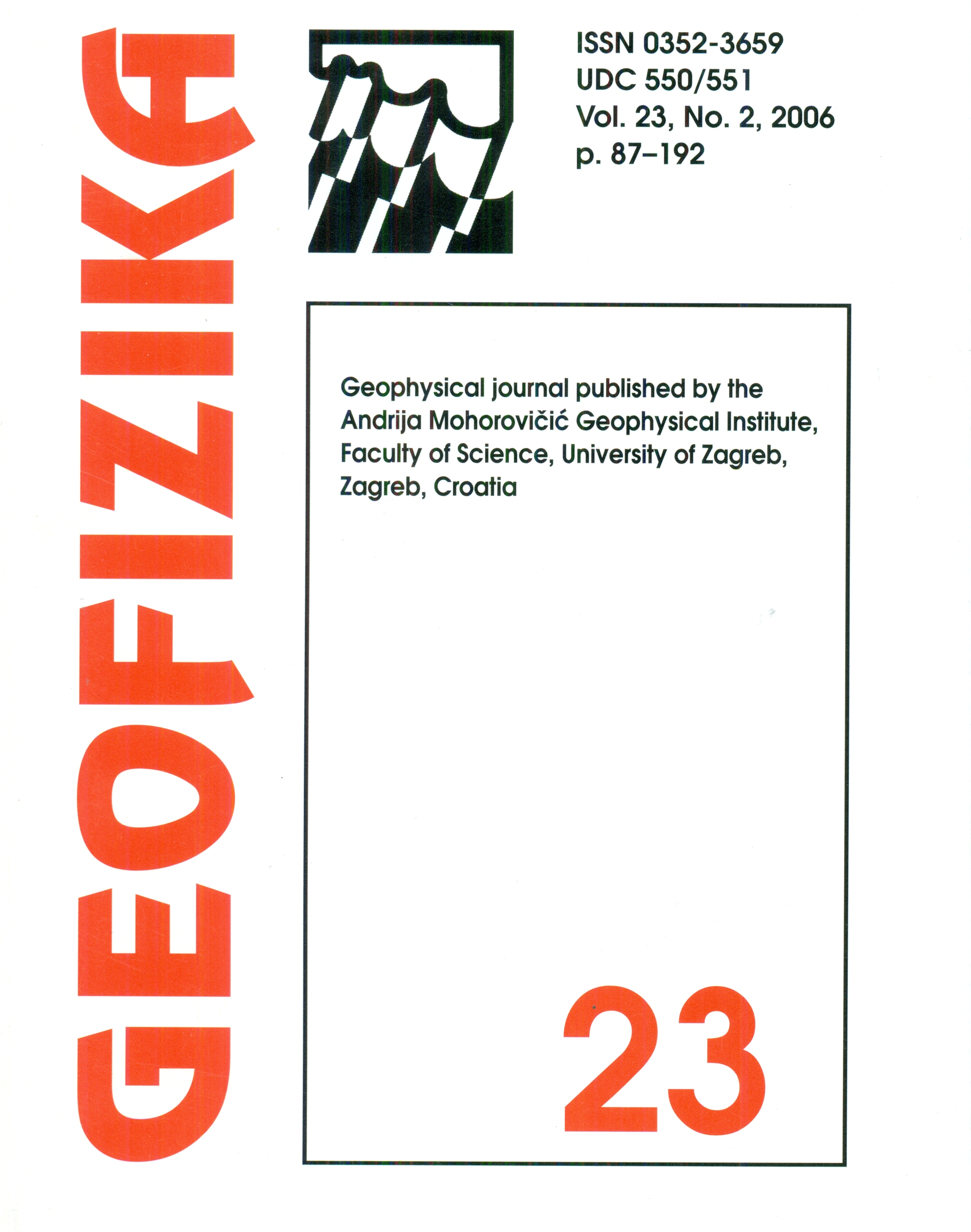Large-Scale Modes of the Tropical Atmosphere. Part I: Analytical Modeling of Convectively Coupled Kelvin Waves Using the Boundary-Layer Quasiequilibrium Approximation
Keywords:
Kelvin waves, convectionAbstract
One way of modeling the convectively coupled Kelvin waves in an equatorial non-rotating atmosphere is presented. It implements a simple linear, analytical model using the boundary-layer quasiequilibrium approximation and wind-induced surface heat exchange. The dynamics of the model are based on the assumption that the vertical heating profile has the shape of the first baroclinic mode. The vertical velocity has two sinusoidal components of different vertical wavelengths. One component corresponds to deep convection and the imposed heating profile while the other component, with shallower vertical wavelength, defines the phase speed of the convectively coupled Kelvin wave.
The results of the model show fast Kelvin waves that resemble adiabatic modes with the vertical wavelength being twice the depth of the troposphere and convectively coupled Kelvin waves that are damped and propagate with phase speed of 18 m/s. Wind-induced surface heat exchange causes the instability of the convectively coupled Kelvin waves, but only for very long wavelengths.
The value of the model is that under the single dynamical assumption of the vertical heating profile and using the boundary-layer quasiequilibrium assumption it yields the observed phase speed for the convectively couple Kelvin waves.
Downloads
Published
Issue
Section
License
Copyright (c) 2021 Geofizika journal

This work is licensed under a Creative Commons Attribution-NonCommercial 4.0 International License.

